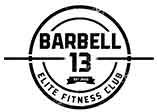The Science Behind HIIT: A Game-Changer in Fitness
HIIT is a training technique that alternates between short bursts of intense exercise and brief recovery periods. Its effectiveness lies in its ability to push the limits of cardiovascular and muscular systems, resulting in rapid improvements in fitness levels and fat loss. The concept is simple: during high-intensity intervals, your body works at near-maximum effort, followed by periods of rest or lower-intensity recovery. This cycle of exertion and recovery challenges both aerobic and anaerobic pathways, leading to efficient calorie burning and muscle conditioning.
Benefits that Transcend Traditional Workouts
- Efficient Calorie Burn: HIIT’s intense nature triggers an afterburn effect known as excess post-exercise oxygen consumption (EPOC). This means your body continues to burn calories at an elevated rate even after the workout has ended.
- Time-Saving: With HIIT, you can achieve substantial fitness gains in as little as 15-30 minutes, making it ideal for busy individuals looking to maximize their workout window.
- Cardiovascular Fitness: HIIT improves heart health by increasing VO2 max—a measure of the body’s ability to utilize oxygen during exercise—which boosts overall endurance.
- Fat Loss and Muscle Preservation: HIIT encourages fat loss while preserving muscle mass, thanks to its combination of cardiovascular and strength elements.
- Metabolic Boost: Regular HIIT sessions can lead to enhanced insulin sensitivity and improved metabolism, contributing to better blood sugar control.
- Adaptability and Versatility: HIIT can be customized for various fitness levels, making it suitable for beginners and seasoned athletes alike. It can also be tailored to different workout environments, such as running, cycling, bodyweight exercises, or equipment-based workouts.
